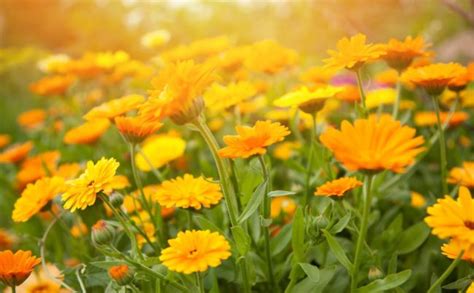Hommage to Calendula
Marigold is the provider of Calendula. An annual plant with a beautiful yellow-orange flower, which grows well in the Dutch garden. But besides being a beautiful garden flower, this plant has a lot more to offer. It has medicinal characteristics. These characteristics have been well known since the Middle Ages. How nice is it to plant the marigold in spring, enjoy the flower all summer and then harvest the plant in fall?
What is the medicinal effect of calendula?
Calendula is especially known for its healing ability. Wounds heal quickly without scarring. These can be grazes, but also wounds caused by eczema, psoriasis or pimples. Calendula has an anti-inflammatory and antifungal effect.
Marigold can also be used internally, for example, you can make tea of it. Problems with bile and intestinal cramps can be relieved by drinking a cup of marigold tea.
How can calendula be that versatile?
Marigold contains a huge amount of phytonutrites, carotenoids, lycopene, carotene, calendulin, violaxantin and flavoxantin. A mouthful of substances which are good for you.
The edible leaves are also loaded with vitamins and minerals and are very healthy.
Flavonoids and faradiol are both known for their anti-inflammatory effect.

Can you process calendula into products yourself?
Yes, you can. Marigold tea is easy to make by using the petals. You can also make a cream from calendula, but pay attention to the expiry date. The plant contains water, so it will not stay well for a very long time. In our Petit&Jolie Calendula Balm is no water added, and due to the addition of vitamin E the balm has a longer expiry date.
For all these reasons we are so happy with our new Calendula Balm. It is a very versatile product that softens and nurtures the skin really quickly. The balm can be used by children and adults, so is very well suited for the whole family.




